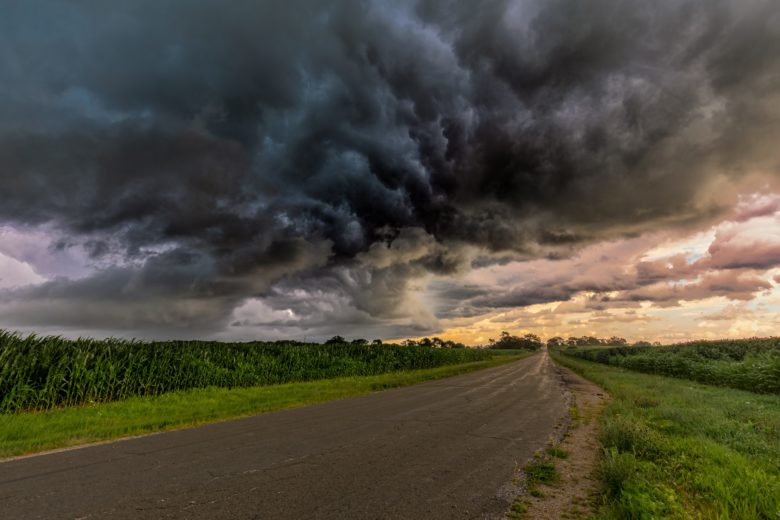Patterns exist everywhere in nature, from the repeating hexagons in a beehive to the red skies at night calming sailor’s hearts. One of my favorite observations of old is, “When leaves show their undersides, be very sure rain betides.”
After days hunched over a garden bed full of weeds and shoulders sore from hoeing potatoes or too much sun, the upside-down poplar and maple leaves are a welcome sight. As dark clouds roll over the hills, or a curtain of rain passes across the pond, I’m ready to drink in the rest that is sure to come.
The other evening, I had been rushing from the grocery to the kitchen to the ballpark to blessed bedtime, and somehow, I’d missed the sure signs of rain. Wade and I settled in for a recap of the day and a rerun of our favorite show, and a breeze waved the curtains more than their usual caress. The gentle tap, tap of rain gave way to precipitation more reminiscent of Forrest Gump’s “little bitty stingin’ rain,” and then, “big ol’ fat rain,” followed by the dreaded “rain that flew in sideways.” Then came the lightening. Bolt after bolt, flash after flash, the night sky was illuminated more than the grandest fireworks show. With a big boom, all went black in and around our home. Almost as if we were well-prepped little millennials, Wade and I reached for our iPhones at arm’s length and lit a path to the snoozing boys.
Like the debris that still clings to the broken treetops in western Kentucky, a lingering effect of those devastating storms is our desire for cover and closeness during those dark, stormy nights. I nudged our oldest awake and Wade carried the still sleeping youngest, his chigger-bitten legs hanging longer than I remembered. We placed the boys on a couch in the basement and made a bed in the floor beside them. Candlelight flickered all night long, and the slight snores of my tuckered-out boys nearly lulled me to sleep.
But I could still hear the dangerous storms.
All the patterns of summer’s storms of rage, violence, and pride are showing their signs, and not just at protests or marches. From the beginning, the devil has rebelled because something lowly (to him, mere humans) was to be elevated through the divine love of God. For all of time, Satan’s pride has made him envious of man, and by his every effort he’s sought to keep what was “less” as less, and what the devil deemed as “greater” to remain greater. It’s why historically and by pattern, Satan pushes infant genocide (kill the small) and a reduction of humanity to pitiful labels (keep them down). The howlings of “my body, my choice” are the misguided cries of those drowning in the flood of lies and muck.
But who calms the storm?
Jesus does…but then He also challenges the disciples in the Gospels of Matthew, Mark, and Luke: “Why are you terrified, O you of little faith?” Is this why we’re timid today, because we doubt the authority of Jesus? Is that why we’re too paralyzed to proclaim the Gospel? Is that why we remain silent, because we’re scared that truth will offend? Do we compromise Christ’s teachings because we’re afraid that we will not be well liked?
If there’s anything I can predict from patterns, it’s this: God is in control, even in the storms. In life, we can anticipate storms will come and storms will go. Know that each new day will have its temptations and troubles and maybe even some thunder, but we should never be afraid. We have a loving, good Father that carries us to safety.
*Feature photo by Dave Hoefler on Unsplash
